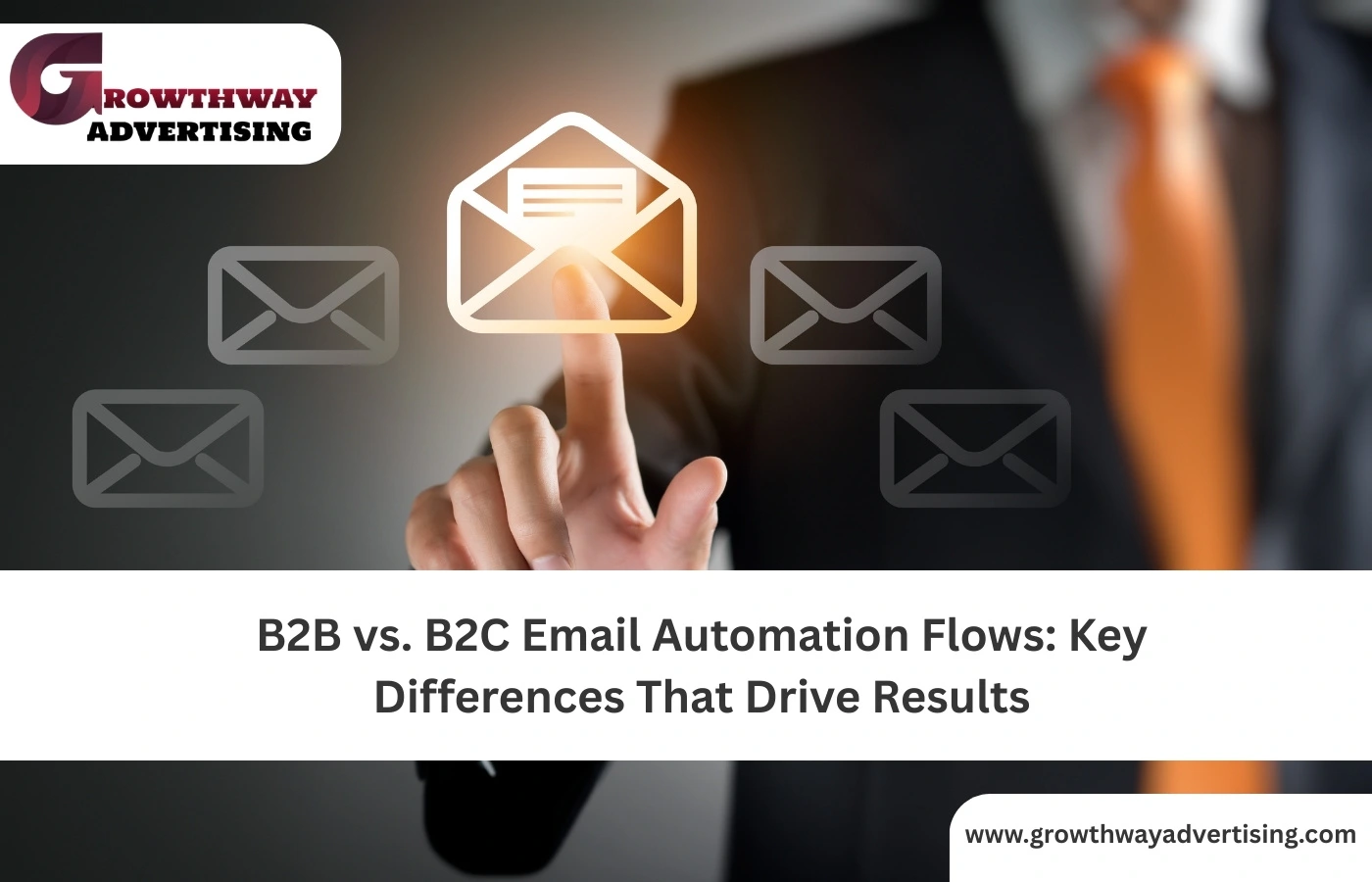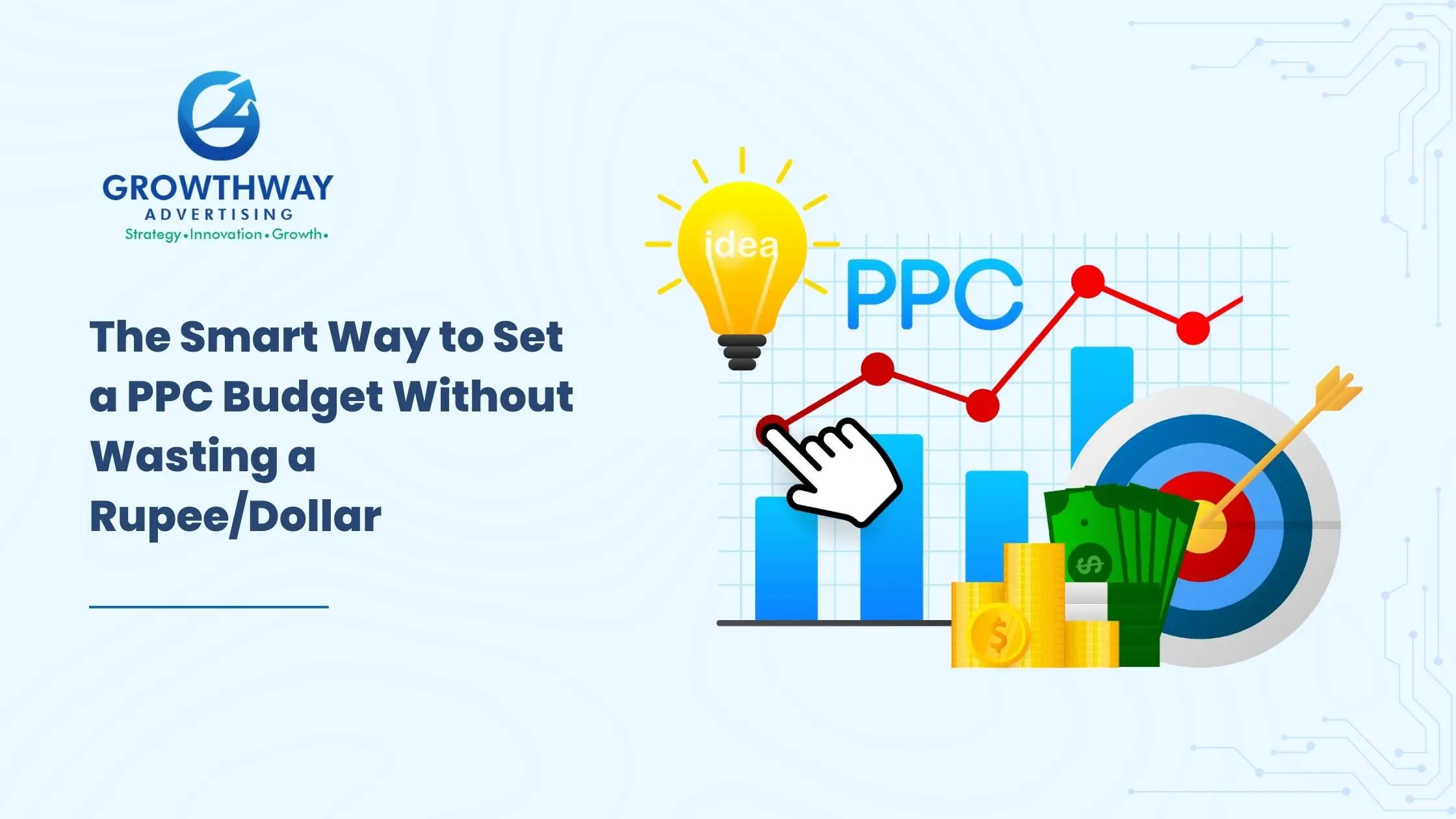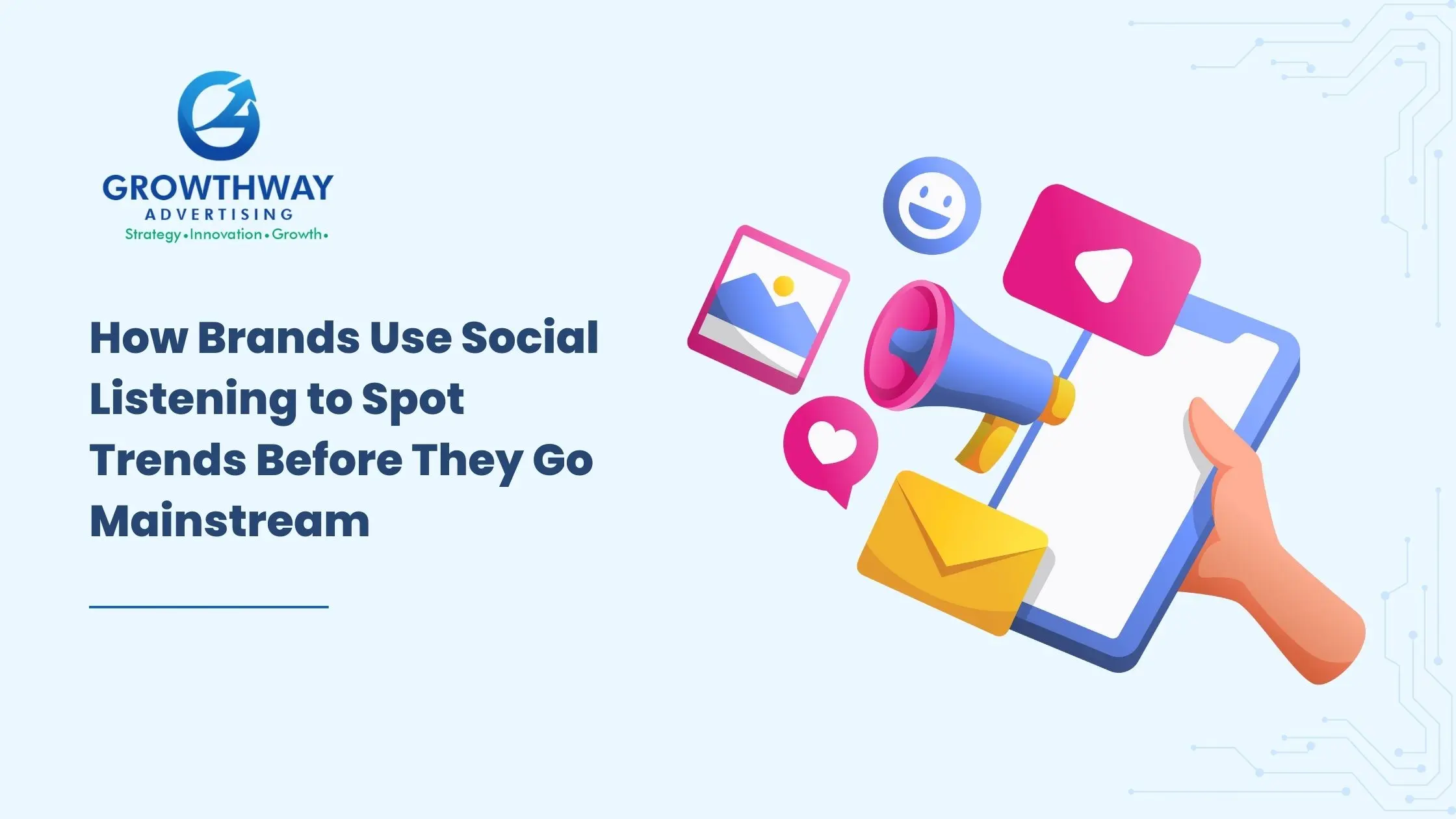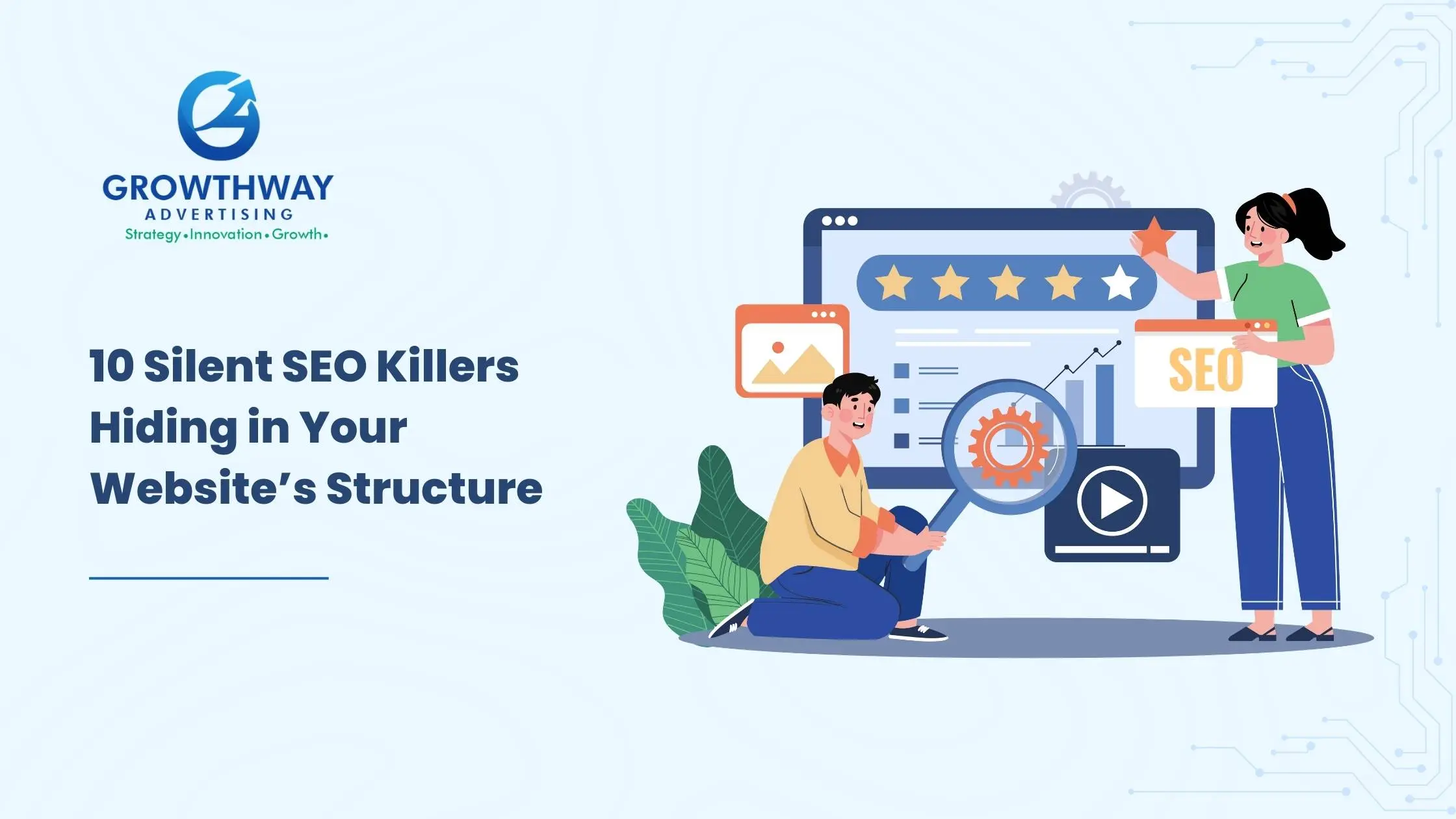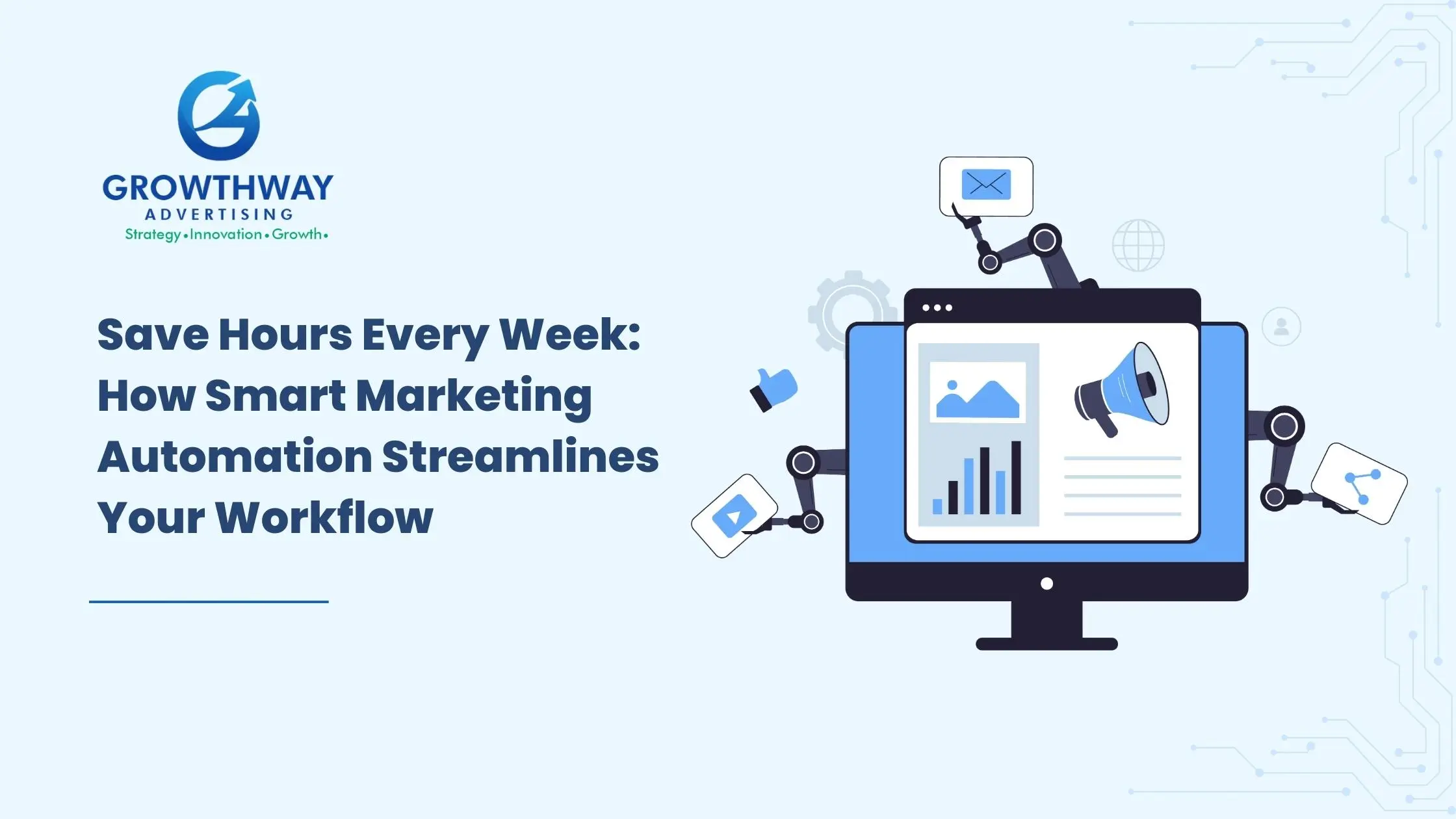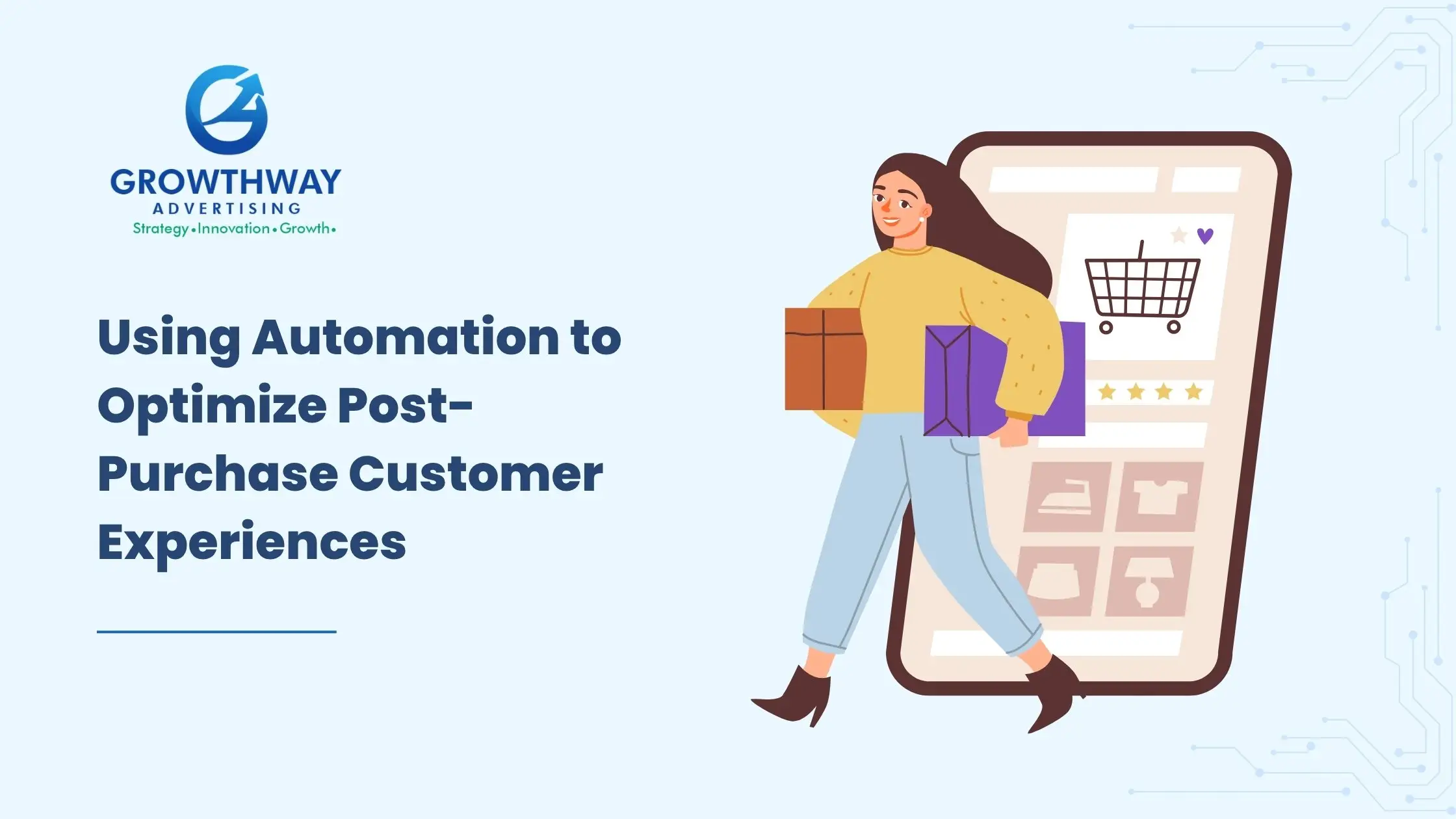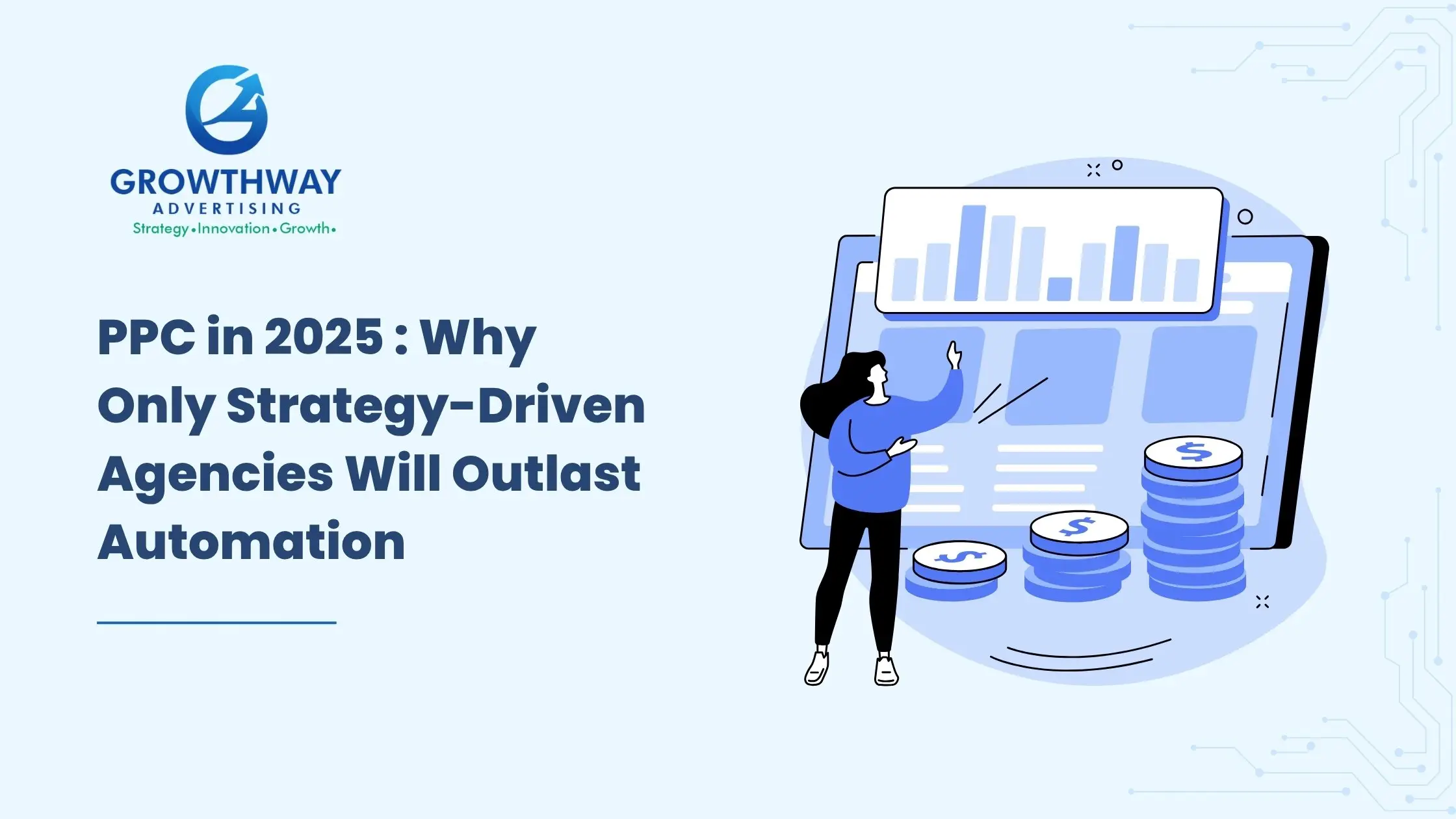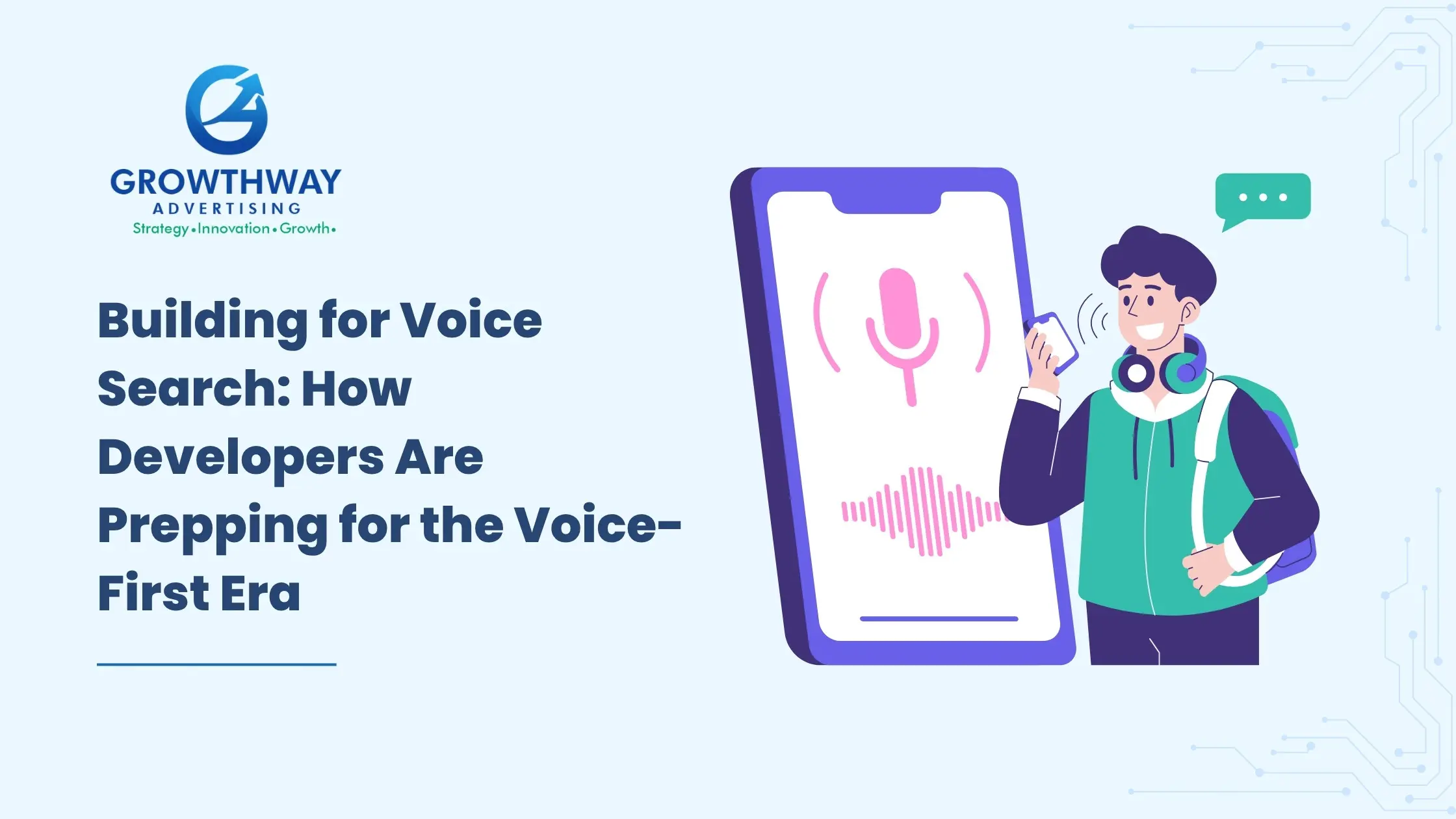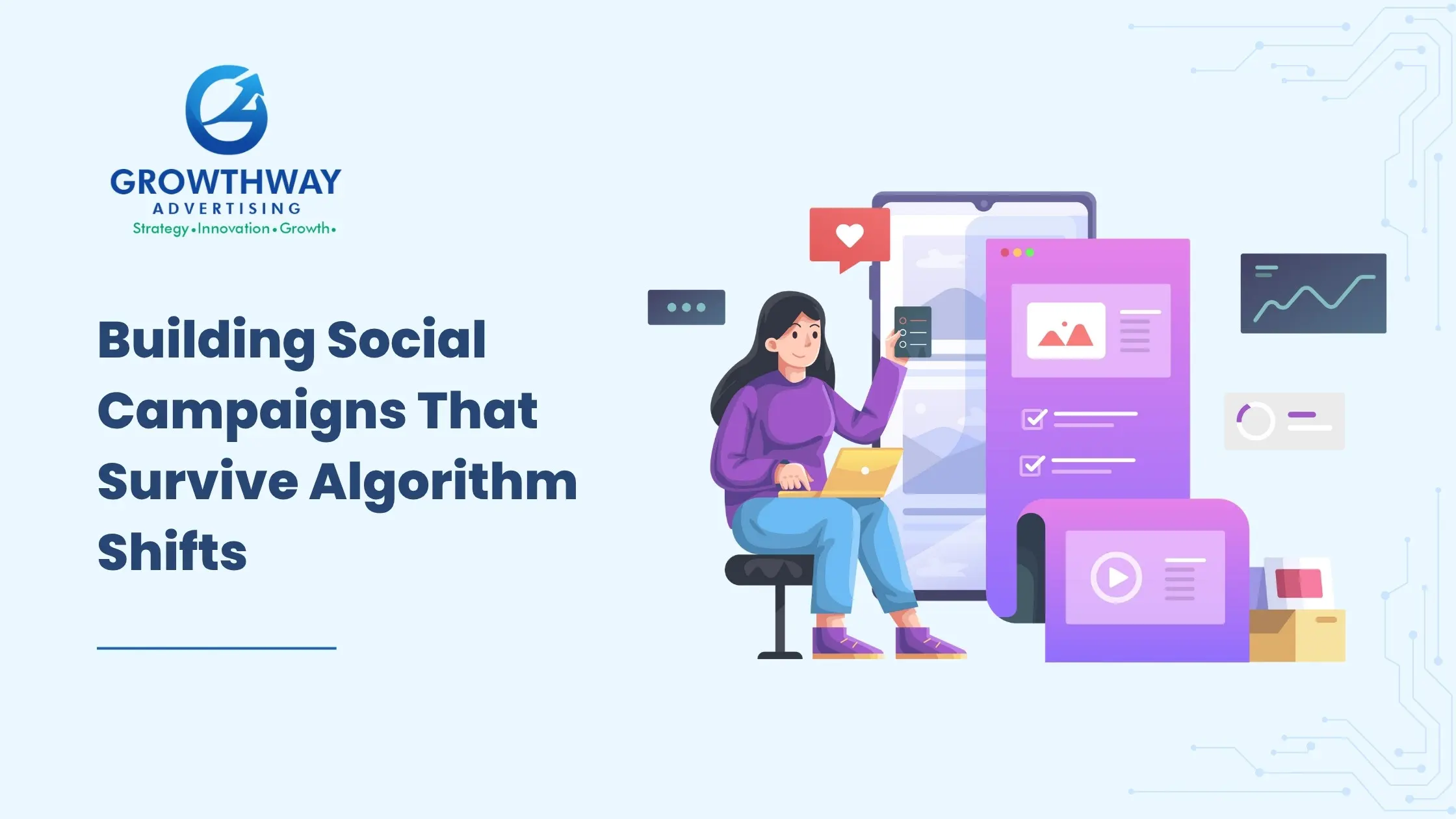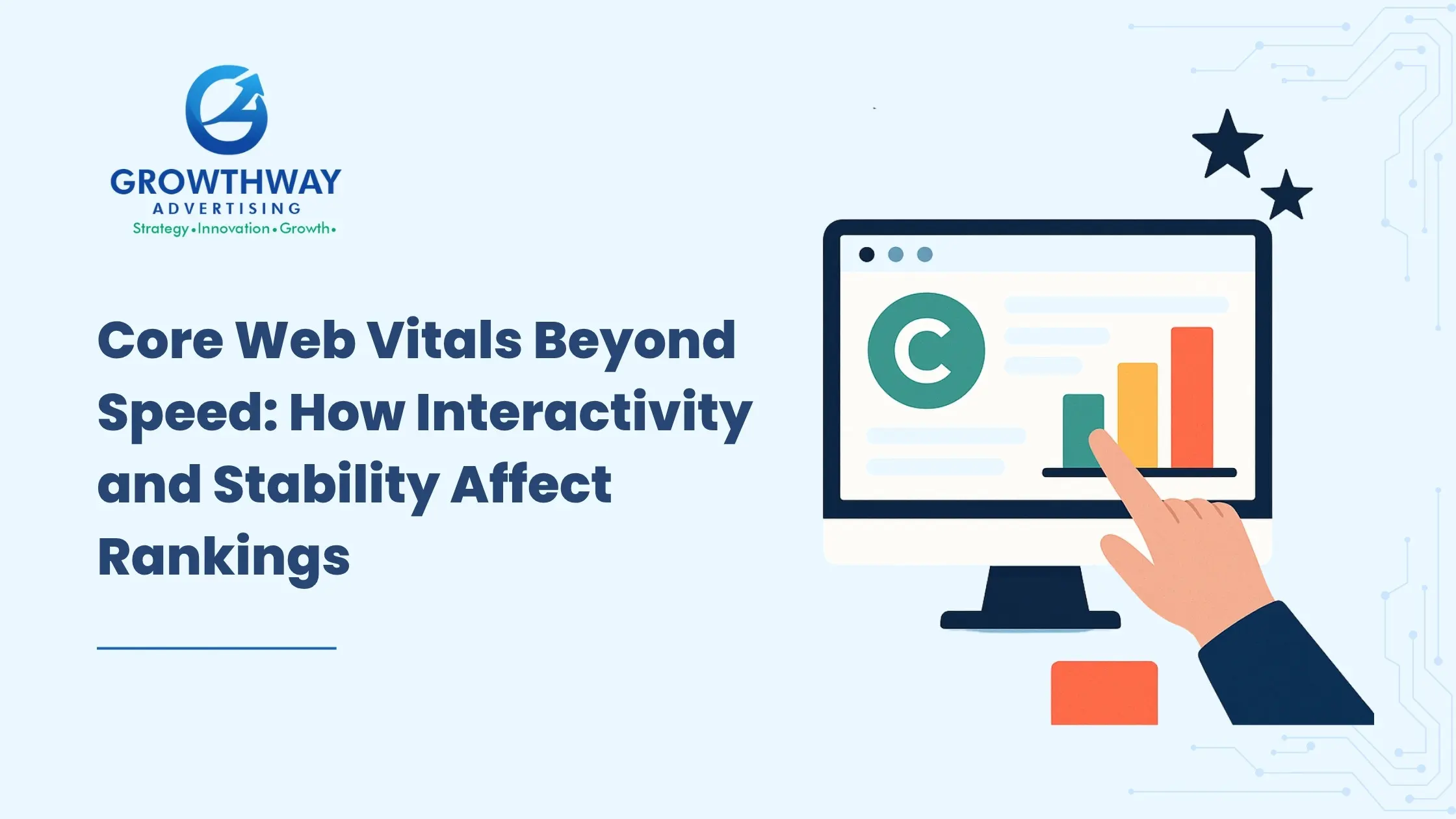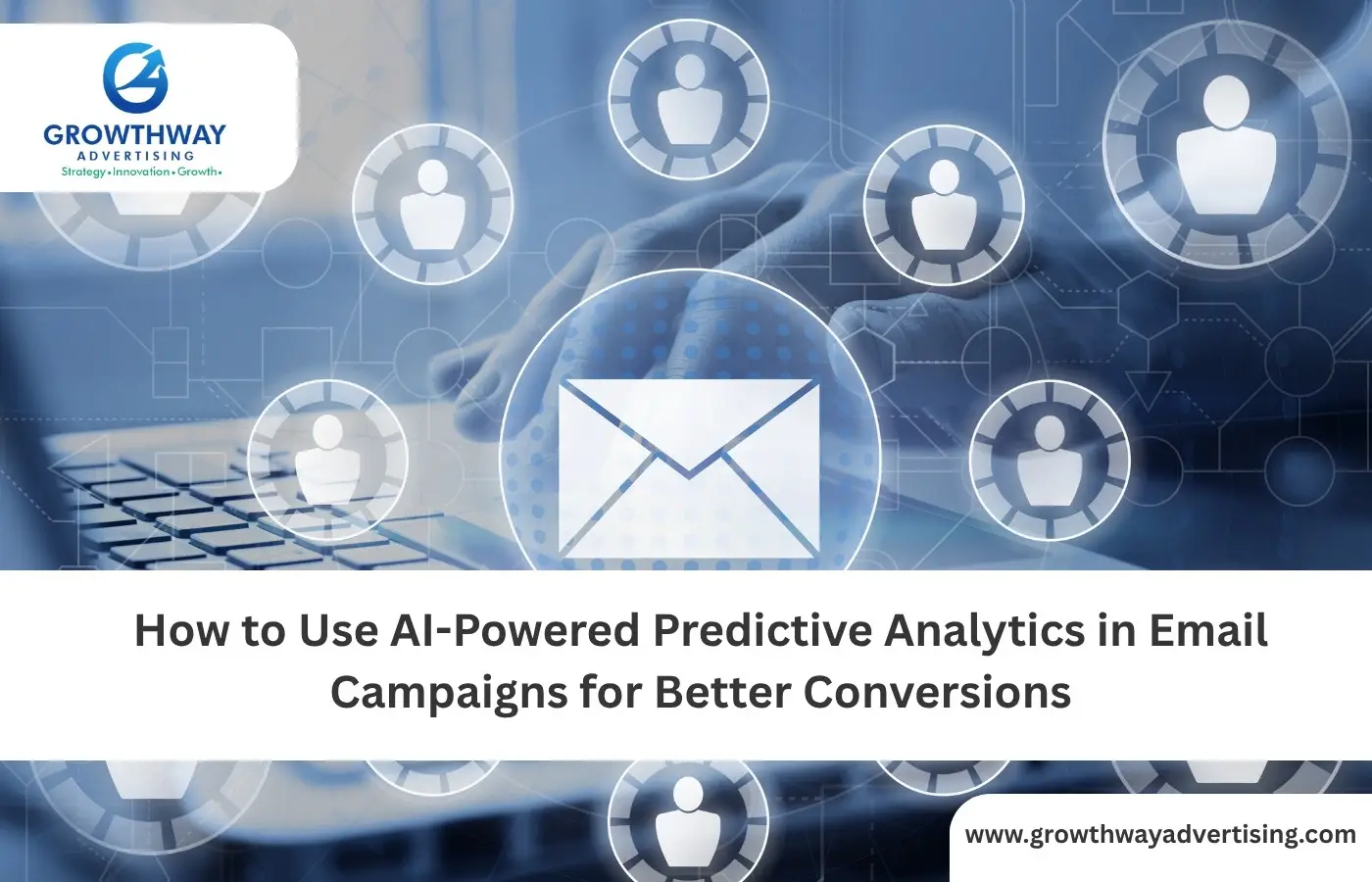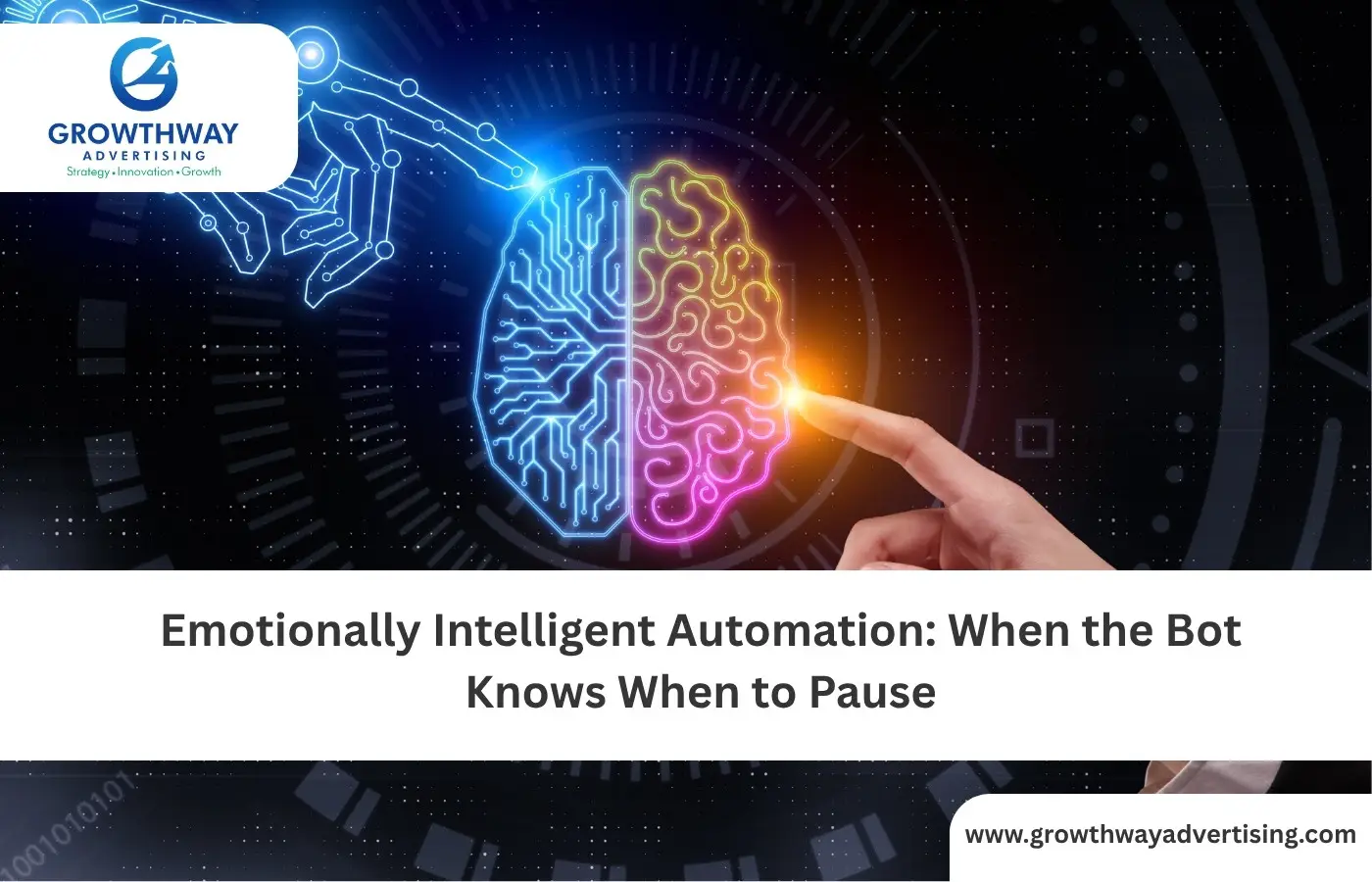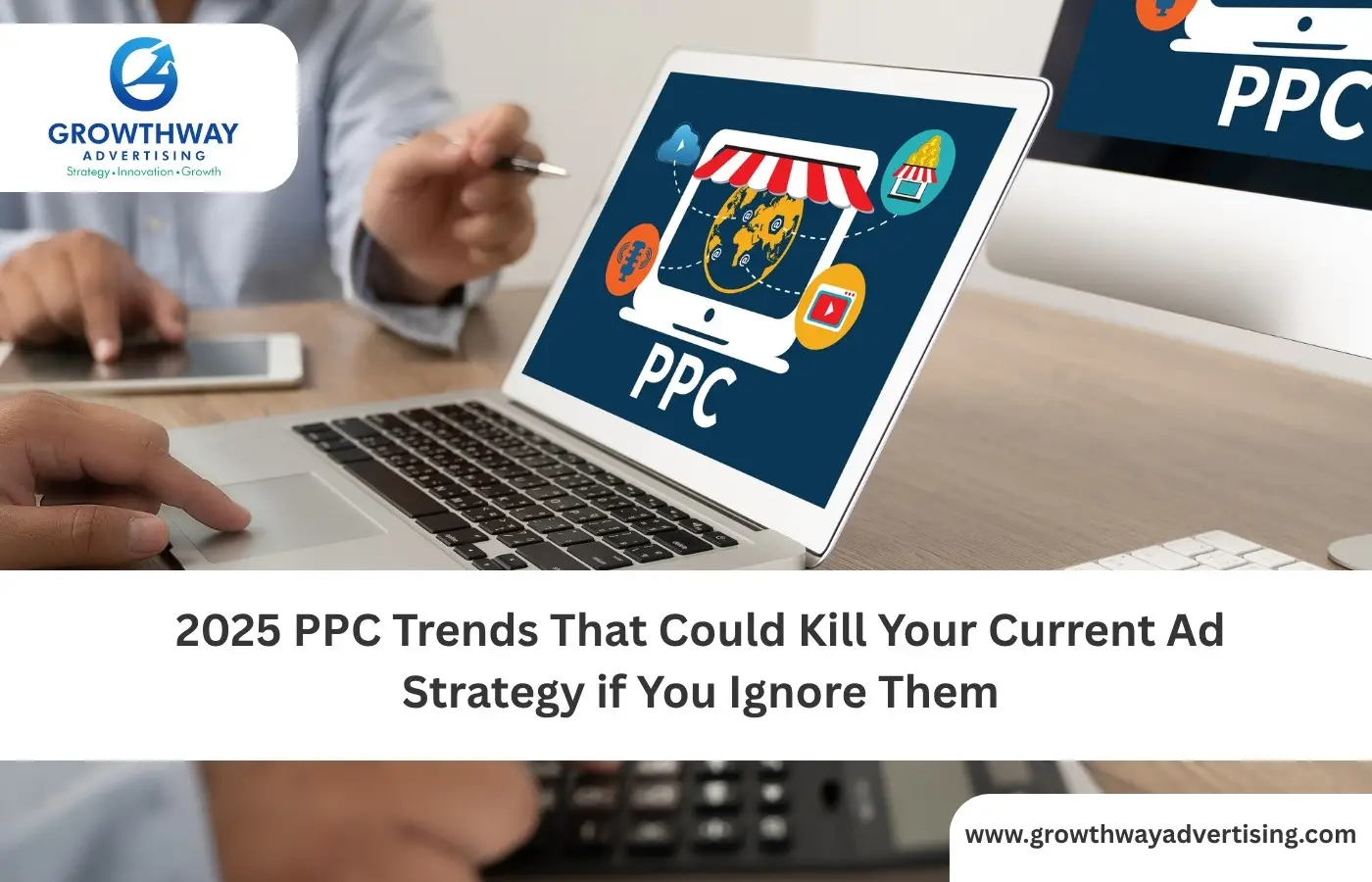When people talk about email automation, they often lump everything together. But the truth is, B2B email automation and B2C email automation operate on completely different engines. The flows that convert in e-commerce rarely work for enterprise software, and the nurturing style that builds trust in B2B feels painfully slow in consumer retail.
What that actually translates to is: optimally, the structure of your automated customer journeys must never be out of sync with the buying cycle, psychology, and expectations of the individuals you are targeting. Here is how we can deconstruct the flows, strategies, and gaps that divide the two worlds- and how you can make them work.
Why B2B and B2C Flows Can’t Be the Same
B2B and B2C brands rely on email marketing automation to make communications more scalable, time-saving, and personalized. Yet the buying paths could not be any different.
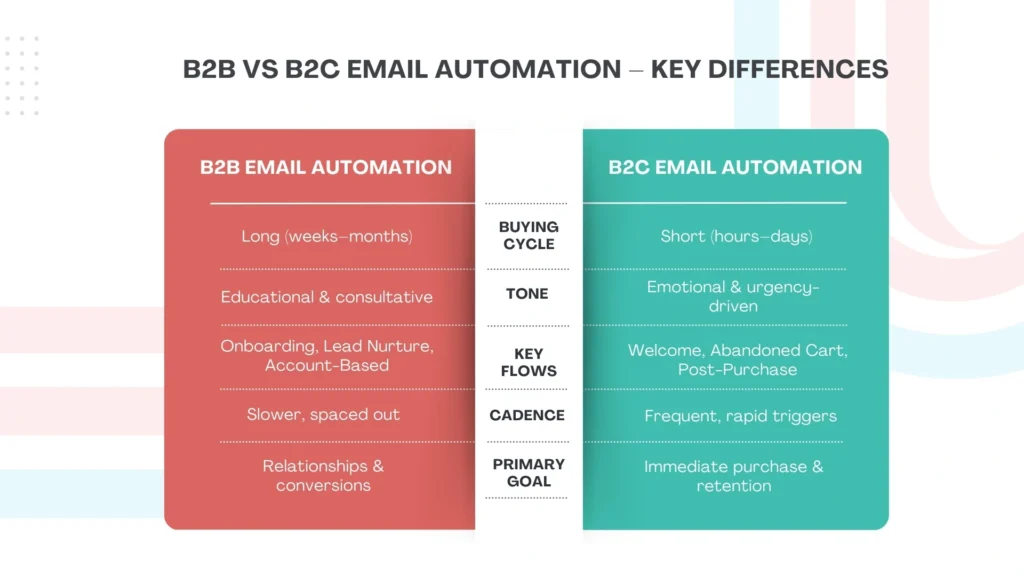
- B2B buyers need time. They research, compare, and often need approval from multiple stakeholders. That’s why onboarding email sequences, nurture tracks, and lead scoring dominate here.
- B2C buyers act on impulse. Discounts, product drops, and storytelling trigger purchases. Here, flows like abandoned carts, post-purchase email campaigns, and loyalty nudges matter most.
The key to developing an effective email marketing strategy is understanding this gap; one that will create results.
Core B2C Email Automation Flows
When doing ecommerce email automation, the following are the high-impact flows that every email marketing agency understands are non-negotiable:
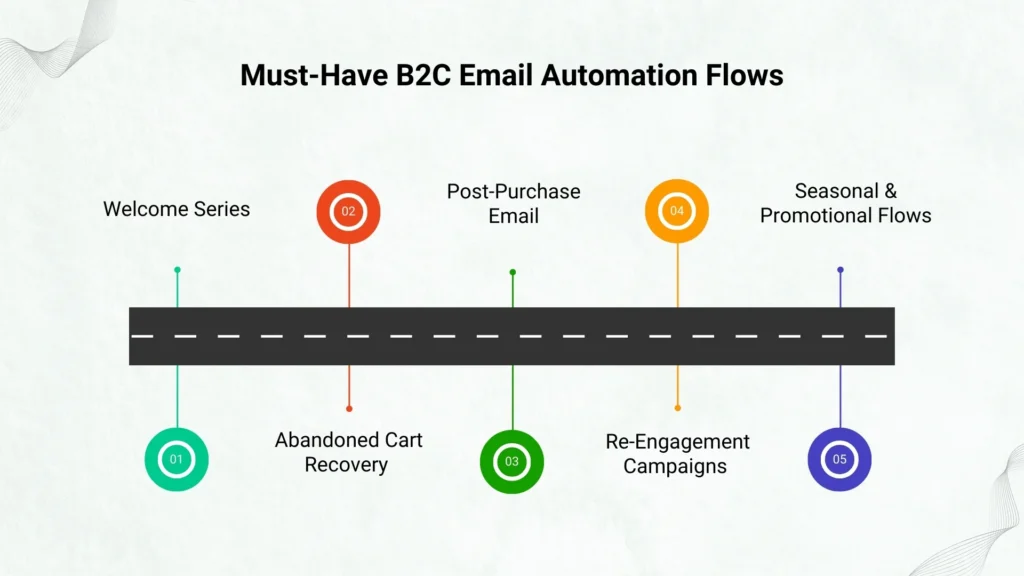
Welcome Series
The first impression counts. B2C welcome flow typically consists of 3-6 emails to present the brand story, the best products, and an offer such as 10% off.
Abandoned Cart Recovery
A shopper leaves items behind. Trigger a reminder within hours, then follow with urgency and social proof. This single flow consistently drives some of the highest ROI in automation in email marketing.
Post-Purchase Email Flows
Selling is not the end of it; it is the beginning. Thank customers, recommend related items or ask them to leave a review. Not only does this increase customer retention, but it also triggers repeat buying.
Re-Engagement Email Campaigns
B2C lists get cold fast. Subject lines such as ‘We miss you’ and special offers revive interest in the win-back sequences. When done well, they lift engagement without damaging deliverability.
Seasonal & Promotional Automations
Urgency at scale is driven by seasonal flows, including Black Friday, Diwali, back-to-school, and other shopping behaviors.
These flows are based on hyper-personalization, which is often driven by browsing history, purchase data, and predictive analytics. The aim is fast, topical, emotional stimulus.
Core B2B Email Automation Flows
In the case of B2B, the flows appear differently. An email marketing agency that would design to SaaS or enterprise clients would focus on:

Onboarding Email Sequences
Trial users and other new leads require some guidance, rather than discounts. They are taken through an onboarding series of setup, best practices, and case studies- driving product adoption.
Lead Nurturing Campaigns
Lead generation is very important in B2B. After a lead is added into your CRM, an automation track delivers them education-based content, such as whitepapers, webinars, testimonials, etc., at funnel stages.
Account-Based Flows
Large deals often require B2B vs B2C email strategy customization. In account-based automation, emails are tailored to decision makers (IT, finance, end users) with content specific to their roles.
Re-Engagement Email Campaigns for Dormant Leads
Rather than discounts, B2B re-engagement is based on new industry news or a roundtable invitation. The hook is authority, rather than urgency.
Customer Expansion and Renewal Automations
There is no money in acquisition in B2B, it is in renewals and upsells. Automated flows are able to label usage dips and initiate outreach prior to churn occurring.
Here is the difference of cadence and tone. A B2B nurture may take 6 months and a B2C flow may take hours or days.
Automation Tactics That Overlap
Regardless of the differences, some of the automation strategies overlap in both worlds:
- Segmentation and behavioral triggers – Whether you’re sending coupons or case studies, relevance is king.
- Personalized subject lines – Both benefit from higher open rates when the message feels crafted for the individual.
- Dynamic content blocks – Show one product to retail buyers, another case study to enterprise leads, all within the same campaign.
These common practices demonstrate that automation in email marketing is not rigid–it shapes itself around buyer psychology.
The Role of Hyper-Personalization
The hype is no longer the buzz word. Hyper-personalization goes beyond a first name, and adds contextualized messages:
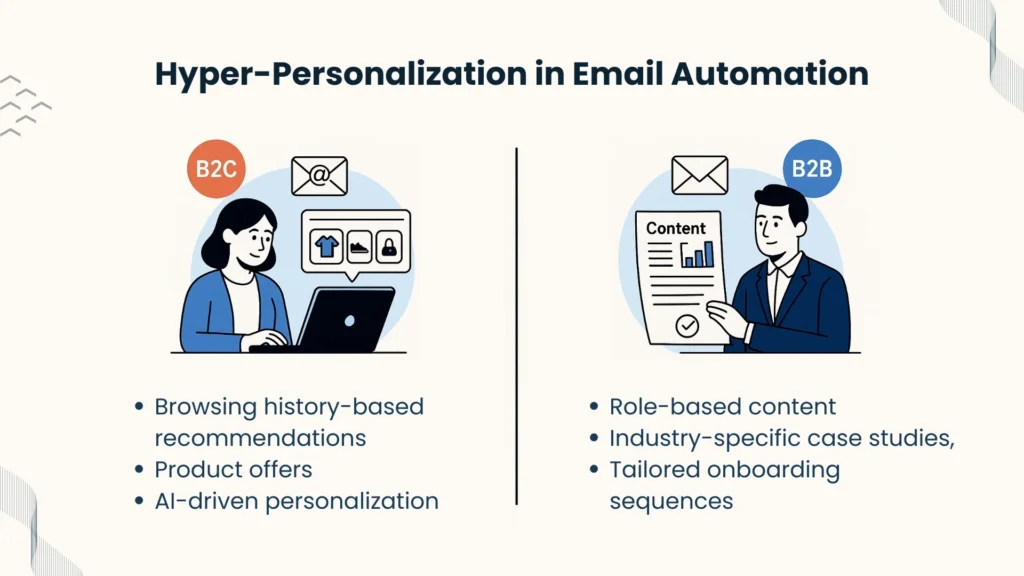
- In B2C email automation, that might look like product recommendations based on browsing behavior or AI-driven dynamic offers.
- In B2B email automation, it could mean content tailored to a prospect’s role in the company, industry challenges, or integration requirements.
This degree of personalization increases trust in B2B and increases conversions in B2C. Any email marketing company that does not pay attention to it is already lagging.
Building Automated Customer Journeys
A common mistake? Thinking of flows in isolation. In reality, your automated customer journeys need to link together.
For example:
- In B2C, a buyer might move from a welcome flow → product recommendation flow → post-purchase email → loyalty re-engagement.
- In B2B, a new lead might flow from a lead generation magnet → nurture sequence → onboarding email sequences → renewal automation.
The actual magic resides in the ability to connect these in such a way that they become one lifecycle engine.
Missed Opportunities Many Brands Overlook
The majority of the debates about B2B vs B2C email strategy end at general comparisons. However, by excavating slightly further, we find that there are a few other areas that fall by the wayside:
Flow Cadence Benchmarks
How frequently then should B2B nurtures be issued? What is the speed of B2C abandonment reminders? In many strategies, specific timing guidance is absent, but it is the distinction between engagement and unsubscribes.
Data Compliance as a Flow Factor
Codes of GDPR, CCPA, and email consent reform automation design. Examples include use of multiple opt-in sequences, preference centers, or role-based B2B targeting. Not many brands provide insights on how to implement compliance into email marketing automation without performance death.
Performance Benchmarks by Flow
There is seldom any sharing of industry-level open rates and conversion rates of each flow. But the question marketers would like to answer is: What is a good abandoned cart recovery? What is the average B2B nurture engagement?
Cross-Channel Triggers
Email isn’t alone. B2C triggers may be connected to SMS to recover a cart. LinkedIn retargeting of dormant leads can be synchronized with B2B triggers. Emails marketing services are enhanced by omnichannel flows.
Sunset Flows for Deliverability
There are too many brands that do not pay attention to list hygiene. The authentication of a sunset chain of uninterested subscribers maintains the reputation of the sender and avoids the adverse consequences of automation in email promotion.
By sealing these sources you are able to create flows which are not only practical, but also forward looking.
Real Examples in Action
Picture this:
- A B2C fashion store sets up a welcome series with a lookbook, a limited-time discount, and a reminder at day 5. Then a shopper browses sneakers but abandons cart an abandoned cart flow triggers with free shipping. They buy, triggering a post-purchase email suggesting socks. Three months later, a re-engagement email campaign says “We miss you new arrivals just dropped.”
- Meanwhile, a B2B SaaS brand captures a lead via a webinar. The lead generation flow sends a case study on ROI. A week later, the onboarding email sequences explain setup tips. Over the next 3 months, nurture tracks share industry reports. If activity dips, an account manager re-engagement sequence offers a one-on-one consultation.
They both are email automation, yet the psychology and the timeframe are on the opposite side of the world.
FAQ’s
B2B automation focuses on long sales cycles, nurturing, and relationship-building, while B2C automation emphasizes quick conversions, discounts, and high-volume flows.
They guide new leads or trial users through product setup and best practices, ensuring adoption and reducing early churn.
Welcome series, abandoned cart reminders, post-purchase campaigns, and re-engagement flows are essential for ecommerce and retail.
Some tactics like segmentation and re-engagement campaigns overlap, but cadence, tone, and goals should be adjusted to fit the audience.
B2B flows usually spread over weeks or months, while B2C flows often trigger within hours or days to capture immediate purchase intent.
They are connected flows (welcome, nurture, post-purchase, win-back) that guide leads or customers through the entire lifecycle, not just isolated campaigns.

